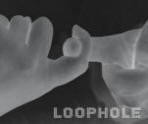
Fiction as practice
thegardenof earthlydelights << / >> swarmtown

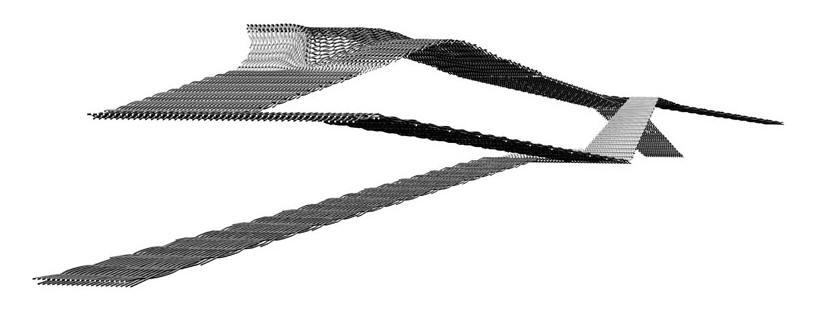
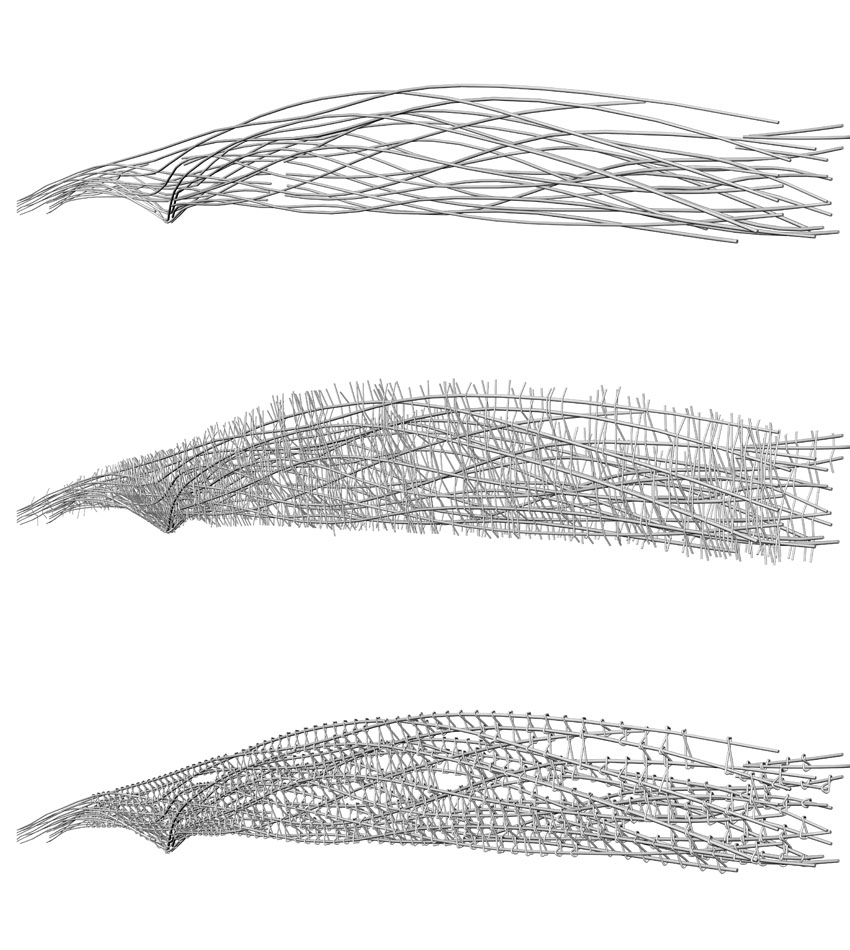

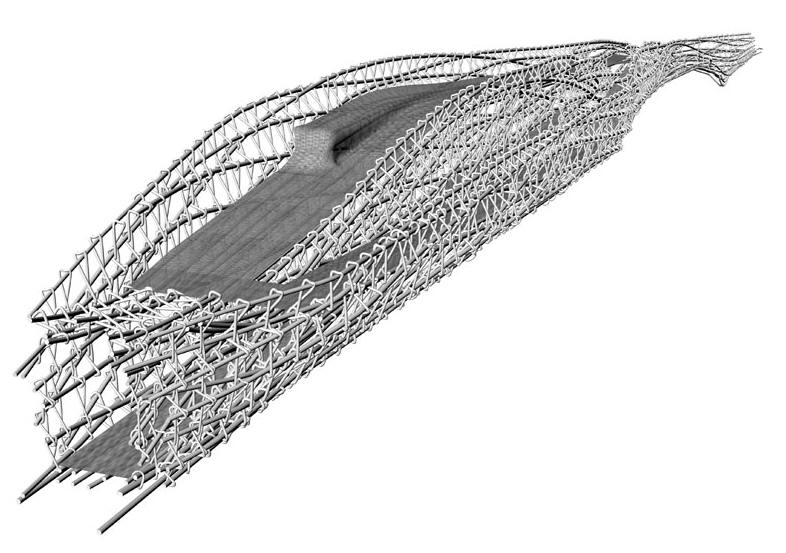
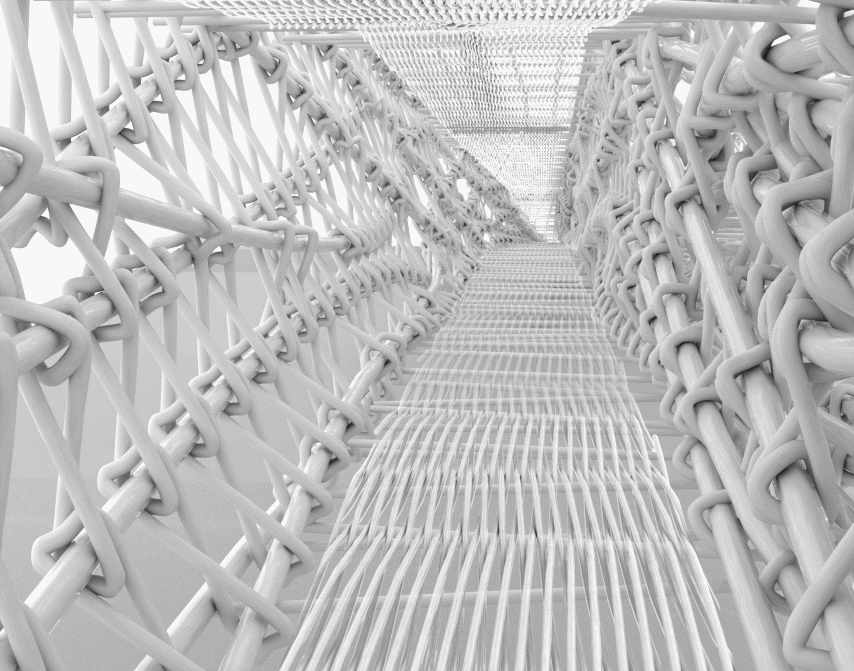
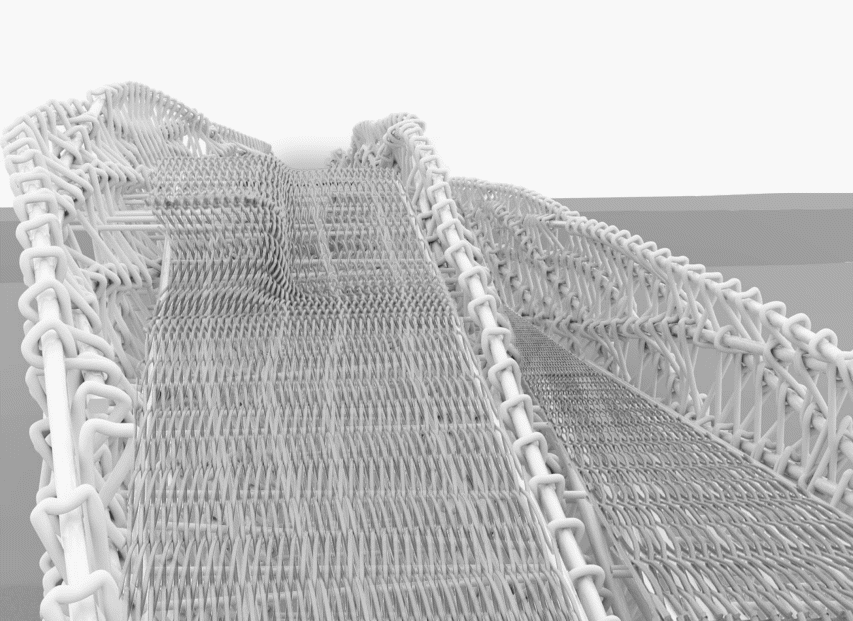
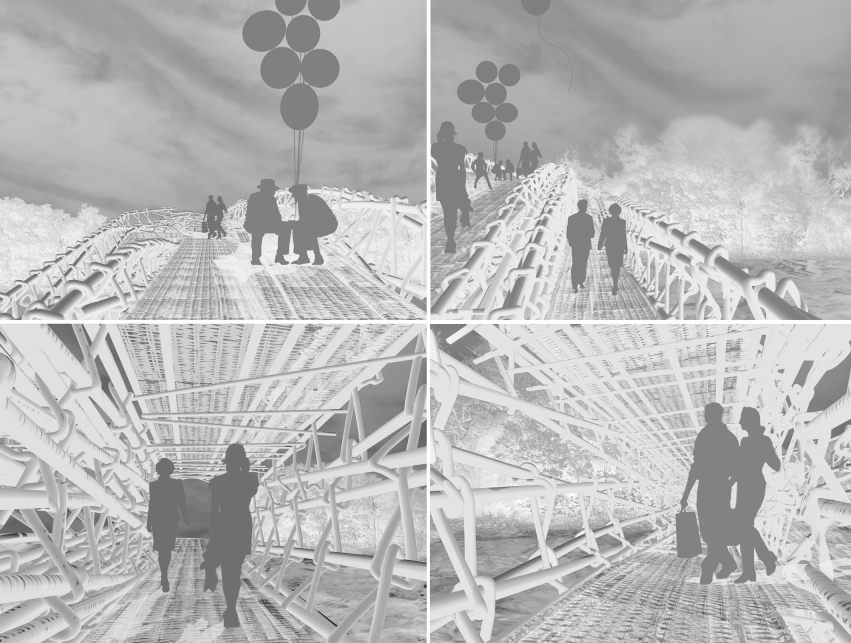



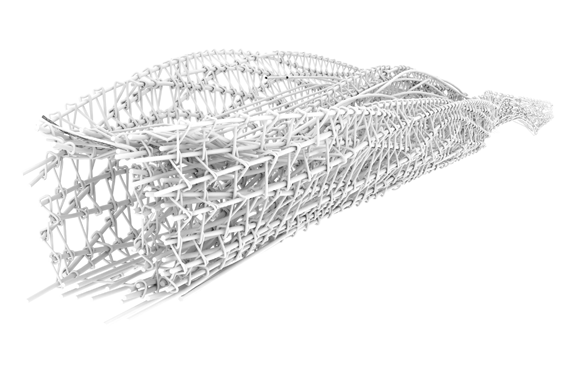
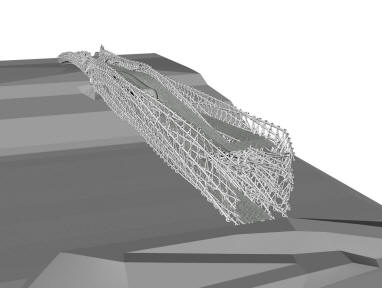
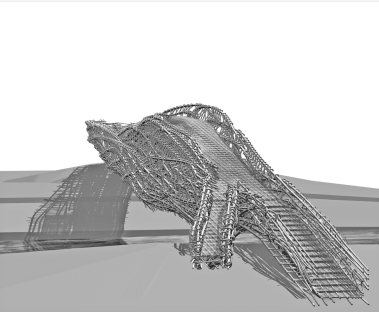

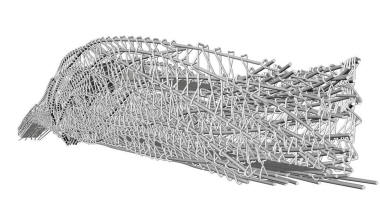
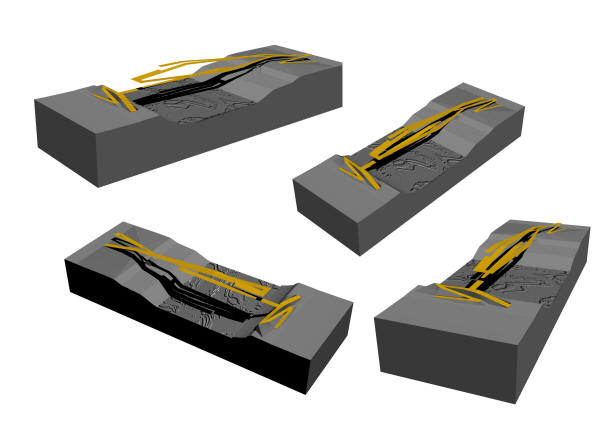
Cieszyn, Poland-Cesky Tesin,Czech / 2005-2008
Architect: New-Territories / R&Sie(n)… Paris
Associated partner: Marc Fornes on clips parametric version.
Creative team: François Roche, Stéphanie Lavaux, with Sylwia Bogdan, Toshikatsu Kiuchi
Engineer: VP&Green, Paris
Key dimensions: 60 m linear
Client: The city of Cieszyn, in both part, Polish and Czech
Cost: 2 million €
Design of a pedestrian bridge on the boundaries of the two countries
Scenario:
1) Recognition of the local history through the natural and political
difficulties to across the borderline river.
2) Developing a strategy to confuse the status of emigrant and immigrant
3) Producing a loop and a tricky walk way to create the ambiguity of crossing.
4) The straight line is never the best way to join two points in the space.
5) Reinforcing the loophole by loop weaved geometry, for heterotopic perturbations (two versions, parametric and handcrafty are studied)
References
‘’between all the wood of the small Park of Versailles, that which one names the Labyrinth, is completely advisable by the innovation of the drawing. It is named the Labyrinth; because it is infinity of small alleys there so much frays the ones with the others, that it is impossible not to be mislaid there. But also so that those which are lost there, can be lost agreeably’’ Charles Perrault, the tales writer, 1770
The loophole bridge puts in scene the crossing of a river between two countries, Poland and Czech, like a strategy of miscibility of two bodies, two liquidities. The ‘’loophole bridge’’ is not only functional, justifying that it s connecting a point A to a point B, but it’s also a meander of the river.
This structural meander accounts for a knotty relations between close relation and distances, between what seems to be on the other side, accessible and far away. The stretching of distances is subjected to the convulsions of the modern history where the other side became sometimes inaccessible (bridge destroyed during Nazi invasion, from Poland to Czech and again during the Solidarność period, to prevent troops or ideological propagation). The loophole bridge joins and dis-joins them again, on a literal sense.
The pedestrian footbridge is a play of track, at least is assimilated to a play of track. To use it in its crossing, it is necessary to turn over on its step and to discover the dissimulated passage. To reconsider these steps, it is in this case a play hesitating between the statues of immigrant and emigrant.
The footbridge is a fold on the border area, a territorial fold which is given to traverse as the ‘’garden with the path which forks’’, as the title of the fiction shortcut novel of J.L. Borges.
A hair weaved and flooding’ design blur the structure and reinforce the impression of Labyrinth ; Ophelia’wigs, from John Millais painting is undulating over the river.
Weaving hypothesis
The Studio worked on a two processes of weaving
- Random Vertical steel sticks (as a handy-crafty-gypsy-basket)
- Parametric Vertical steel staples or clips connected by two by two elements / this script of clips weaving have been developed with Marc Fornes, architect.
Czech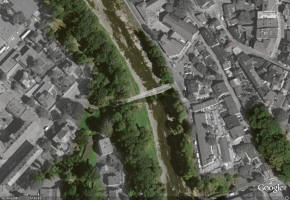 Poland
Poland
------------------------------------------------------------------------------------------------------------------------------------
Preliminary Gypsy version (1.0)


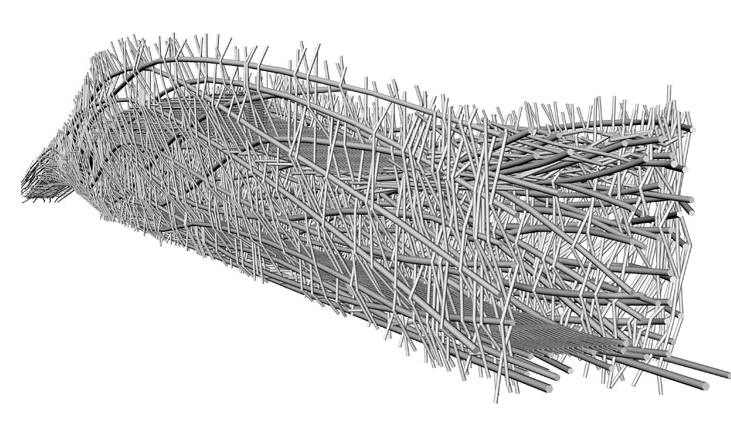


------------------------------------------------------------------------------------------------------------------------------------
----